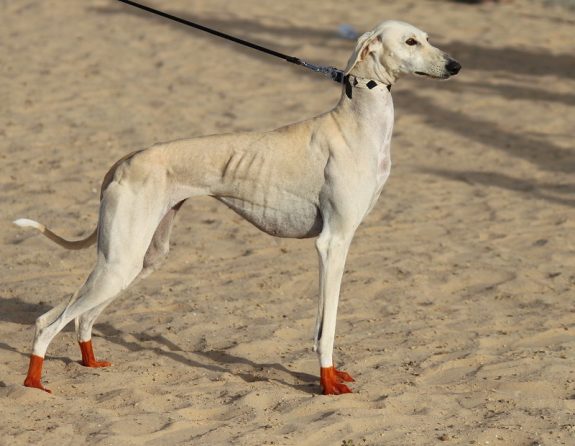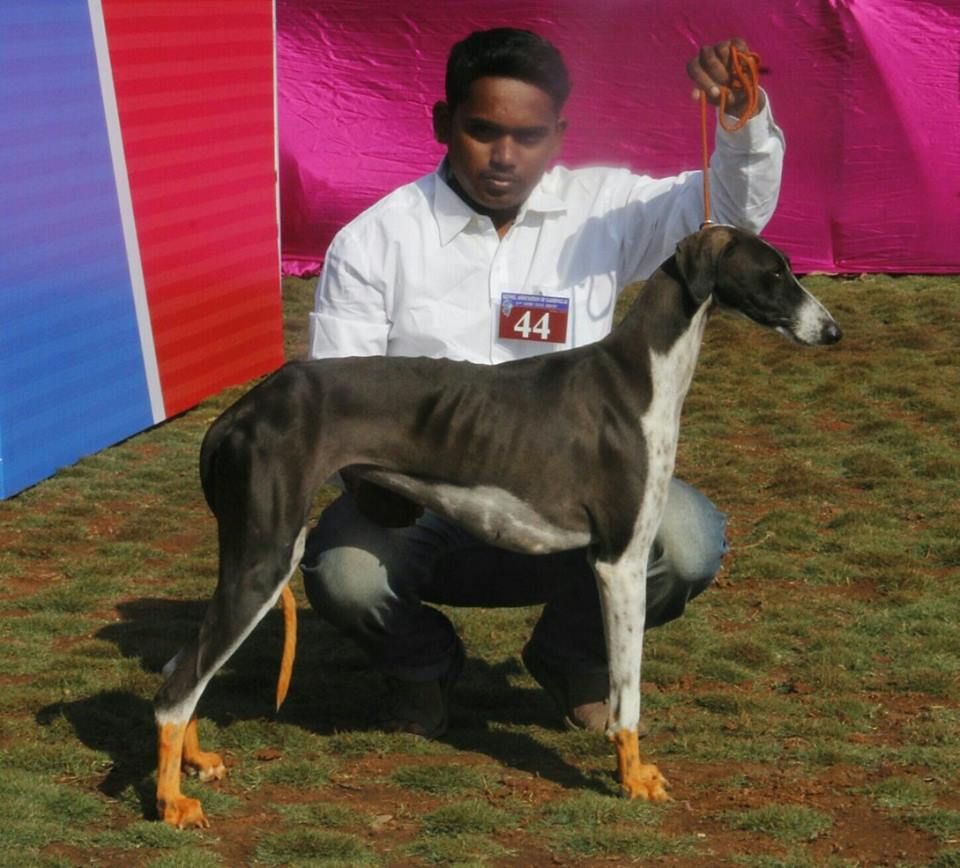
The Mignonette tree, or Mehandi, is a middle-sized, multi-branched shrub that in the Far East is believed to have anti-hemorrhagic, intestinal anti-neoplastic, cardio-inhibitory, hypotensive, and sedative properties. Not surprisingly, then, the bark, seeds, and oil of the Mehandi has been used for centuries as medicine to treat everything from headaches to leprosy. In the west, we only know the plant for the beautiful dye used by many cultures to color hands and body. Most of us know the Mehandi better by its other name: Henna.

In many countries, its believed that henna exhibits antibacterial, anti-fungal, and ultraviolet light screening activity, and this is why henna paste is so often seen on the legs of desert bred sighthounds. The Bedouin use it to protect and strengthen the legs of dogs running on ever shifting sands that often form a scant layer over hard rock or ground. Henna, they believe, is an analgesic and anti-inflammatory that is also used to treat cracked paws or a cut suffered during a chase. In the United States, however, henna as a medicine is not FDA approved, and it’s known to be dangerous to people with glucose-6-phosphate dehydrogenase deficiency. It’s been grandfathered in as a hair dye, and as much as we believe that ancient remedies should be investigated, we wouldn’t use henna on the skin of a dog (or person) without consulting a medical expert. We share this information to explain why desert-bred sighthounds have red feet or legs, and that it’s not always been applied for “good luck” or to dispel evil spirits, but to preempt or treat inflammation or infection.
Images found on Pinterest and happily credited upon receipt of information

A friend of mine that is a henna artist says that they also pack horse hooves with it for the same medicinal reason